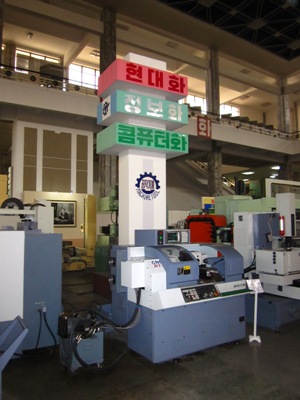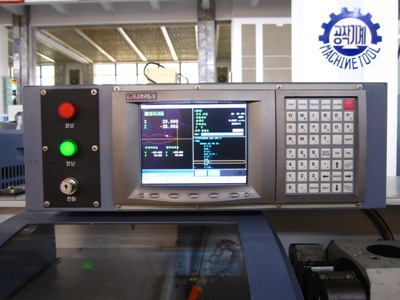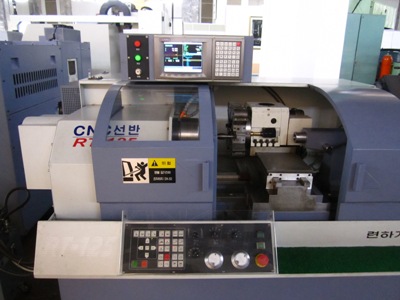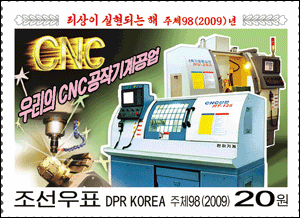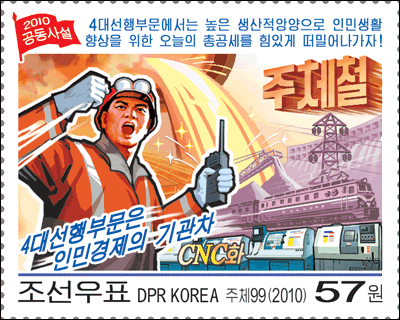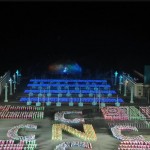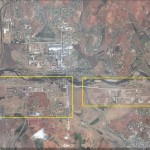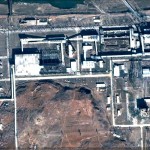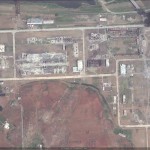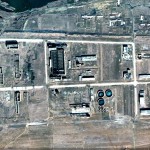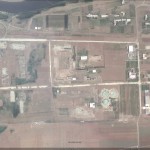It was without a doubt one of the strangest official visits I have ever taken, more like Cuba than anything else. The same slogans, the same ever-present security services, and the same absurd rules on taking pictures and communicating with the outside world. Compared to the loose Cubans, the North Koreans have an uncompromising assiduousness and iron resolve.
What I saw in North Korea lies somewhere between between what we were shown by our minders, and the one-sided Western impression of the country as the world’s poorhouse. Many foreign observers have praised the North Koreans’ high levels of education, along with their will and discipline to see their projects though to completion. Economic liberalization by the regime and an end to the sanctions would result in a rapid economic recovery.
Although we had little opportunity to speak to North Koreans not pre-selected by the regime, the signs of malnutrition among the rural population and even parts of the urban population of Pyongyang were unmistakable. Here a comparison with impoverished African living standards would be completely appropriate. With regards to its sometimes-crumbling infrastructure, however, North Korea is at least at the level of a poor emerging market. The drive to maintain and modernize the infrastructure – the roads and housing stock, for example – is also unmistakable.
Surveillance in North Korea is all-encompassing: even for North Korean citizens, trips to other provinces are only possible with official authorization. The landline phone networks of foreigners, the government, and ordinary North Koreans are strictly separated by technical means. Nobody knows who’s doing the informing, who or what they’re informing on, or who they’re reporting it to.
To a European, the personality cult of the two North Korean leaders, Kim Il-sung and his son Kim Jong-il, seems grotesque. Upon each visit to factories and state enterprises, attention is called to the number of visits “by the president” or “by the general,” and what “notes and guidelines” they gave. These can range from instruction on the proper feeding of ostriches, to the more efficient operation of machines, to the proper way to store old books. Kim Jong-il is said to have tested new varieties of apple trees in his own garden before they were distributed across the country. The veneration of the founder and “eternal president” of the People’s Republic, Kim Il-sung, who died in the 1990’s, is indeed quite noticeable in rare face-to-face discussions with North Koreans.
Before our trip, tensions between the two Koreas ran high, due to the dispute over the responsibility for the sinking of the South Korean warship “Cheonan” and the deaths of its 46 sailors. The German Foreign Office didn’t want us to make the trip, but our group considered it important, especially given the circumstances, that relations are not severed.
Our group consisted of representatives of the trip’s organizers, Friedrich-Ebert-Stiffung, Frank Hantke, and Werner Kamppeter; WAZ [trans. note: a German newspaper] senior editor Richard Kiessler; WAZ journalist Jutta Lietsch; August Pradetto, professor of political science at the Helmut-Schmidt Armed Forces University; former MP and federal justice minister Herta Däubler-Gmelin; MP and speaker Johannes Pflug; and myself.
Sunday/Monday, May 23/24, 2010
Departure from Frankfurt. Most of the other participants have already arrived, for example via China. Flight to Beijing, arrival on Monday morning, then another trip to Pyongyang.
Upon arrival in the tiny Pyongyang airport we were met by representatives of the North Korean Workers’ Party, and spoke briefly in the main hall of the airport. We’d like to emphasize that we considered it important to come for a dialogue during this tense time. We took this opportunity, as well as others in the next few days, to indicate to the North Koreans that a flexible reaction, and not the immediate threat of “total war,” would strengthen their position.
We had to leave our cell phones at the entryway, though they wouldn’t have worked anyway.
We had dinner at the hotel, at the request of our hosts, and the conversation was rather diplomatic, followed by short group meetings. Johannes Pflug, an Asia expert who has been to North Korean several times, was our spokesman.
Tuesday, May 25, 2010
Before we left the hotel, Mr. Tong, responsible Western European affairs within the Central Committee of the Korean Workers’ Party, related to us the official position on the Cheonan accident as reported in North Korean newspapers. The North Koreans indirectly threatened to use their nuclear weapons, and especially intensified their criticism of the expert panel’s findings, stressed North Korea. Many statements were disputed in detail and they demanded that North Korean experts also be allowed access to the evidence, and that the surviving South Korean sailors be given permission to testify before international experts.
Before our first meeting we visited the house in Mangjongdä where Kim Il-sung was born, a simple peasant house for a cemetery caretaker, which was arranged as a memorial. From a hill closeby there was an outstanding view of nearby Pyongyang.
Exchange of ideas with Mr. Ri Jong-chol, vice commander of the international division of the Korean Workers’ Party. At our request he expounded upon his ideas of North Korean’s present situation: “We have designed a new form of synthetic fiber, which could improve our clothing supply,” “We have developed a new chemical fertilizer through anthracite gasification, to raise the level of food production” (because of the sanctions, North Korea suffers from a fertilizer shortage), “In 2009 there will first be 151 days of action during which new houses, hydroelectric dams, and orchards will be created, followed by an additional 100 days” (part of the preparations for 2012, the 100th year anniversary of the birth of Kim Il-sung), “Reunification as our biggest wish,” “The South Koreans’ current policy towards the North is confrontational,” “We have proposed a US-North Korea peace treaty,” “American policy towards North Korea has again been put in the hands of hardliners because of the desire by American Democrats to win seats in the US Senate.”
Our questions as to why China supported the recent UN sanctions against North Korea and what, specifically, a peace treaty with the USA would include (currently there is only a ceasefire agreement) were not addressed. In North Korea’s view the Non-Proliferation Treaty is unfair, according to Mr. Ri, for the “atomic threat by the USA still remains.”
In the early afternoon we had a discussion with the leader of the European section of the Foreign Ministry, Mr. Kim Chun-guk, followed by a visit to the monument to the Juche ideology of Kim Il-sung, which differs from Marxist ideology in that it places a strong emphasis on national autonomy. A focus of the discussion was the tension surrounding the sinking of the Cheonan. The North Koreans put forth the same arguments as on Monday morning, and we criticize the immediate threats of war by North Korea, and encourage a political rather than military solution. The conversation turns to the poor relationship with Japan, North Korea being accused of never having revealed the fate of Japanese citizens kidnapped in the ’70s and ’80s. The accusation was rebuffed, notwithstanding the admissions of kidnapping in the 1990s. The North Koreans say that they freed all the surviving abductees, and that Japan has yet to apologize for the “death, kidnapping, and forced prostitution” during the 1910-1945 colonial occupation.
Later in the afternoon we had a discussion with the chairman of the Korean-German parliamentary friendship group, Mr. Ri Jong-hyok, who studied in East Germany in the 1960s and was a classmate of Kim Jong-il. During this discussion it was worth paying special attention to the nuances in his answers, despite his evasiveness in answering our questions. He expressed fear that because of the tensions, the Special Economic Zone, supported jointly by North and South Korea, may no longer be tenable. We interpreted this as suggesting that the North Korean leadership has not yet decided on a specific reaction to further South Korean sanctions. The tensions surrounding the sinking of the Cheonan played the biggest role in our discussion, in addition to North Korea’s energy supply. At the end we gave him a list of eleven names of German citizens who are children of North Korean exchange students in East Germany in the ’50s and ’60s, and who are seeking contact with their fathers and half-siblings.
In the evening, there was a banquet at the German embassy. The German ambassador would soon be sent from North Korea (diplomatic relations since 2001) to Guatemala. The German embassy lies on the ground floor of the former East German embassy, which it currently shares with the British and Norwegian embassies.
Wednesday, May 26, 2010
In the morning we paid a visit to a glass factory constructed by the Chinese and a Yellow Sea lock built in the 1980s, which included an 8-kilometer long dam, which turned a lagoon into a freshwater lake. The glass factory built in 2005 is of the highest technical standard. According to the factory leadership, 50% of the production is for the domestic market, with the other 50% destined for China. One thousand employees build not only window glass, but also stained glass, plate glass, bulletproof glass, and glass doors. One branch builds bottles and blenders with the cooperation of the German firm Tekal. They are especially proud of their CNC machines, with which all sorts of glass jewelry and various pre-cut parts can be built. The introduction of CNC in North Korean firms is part of the current modernization campaign by Kim Jong-il.
On the way to the Yellow Sea lock we noticed the poor overall supply situation. But more specifically we noticed that, after the two typhoons in the 1990s hit, peasants have cut down trees for their own private use, and have planted crops on the steep hills. These fields yield few crops, but have totally eroded the soil. Only 16% of North Korea’s acreage is provisioned for agriculture.
At the Yellow Sea lock we were also met by a pretty, young girl, dressed in quasi-traditional costume. Ultimately this turned out to be standard operating procedure; young girls are trained specifically for this job. Each enterprise has a large mural of Kim Il-sung and/or Kim Jong-il in the entryway – a large stone tablet (30 meters on one side) with laudatory verses and a room dedicated to the history of the enterprise, with special attention paid to visits by North Korean leaders.
The Yellow Sea lock was built by 30,000 workers in 1981-86 in order to prevent the encroachment of saltwater fifty kilometers up the river to Pyongyang, and thus to ensure safe drinking water for agriculture, residential use, and industry. The enormous dam is broken into three lock chambers, allowing ships of up to 50,000 gross registered tons to pass through. Despite the seven meter tidal range, the dam only generates enough electricity to power the lock.
There are many people out in the rice fields since the planting season is just beginning, and the office workers must regularly help. Many soldiers can also be seen in the fields, and incidentally at road and housing construction sites as well. In contrast, over the next few days there were barely any armed soldiers to be seen; no signs could be seen of a general mobilization, as many Westerners assumed would occur after the Cheonan incident. In the West it is known that the North Korean army employs 1.3 million of the country’s 24 million citizens. Not known, however, is the fact that the army must to a large extent finance itself, mostly working domestically in agriculture and building projects, and therefore is not constantly under arms.
The mobilization of North Korean troops, presumed by South Korea, is nowhere to be seen, and in addition hardly anybody among the population or in government expects a war due to the Korean crisis.
Outside of Pyongyang there are barely any cars on the enormous eight-lane arterial highways. The traffic in Pyongyang itself has, however, definitely increased. In terms of mass transit there is a subway, surface trams (constructed similarly to East German trams, because of the earlier COMECON bond), buses, and trolley buses (in horrible condition). The populace, however, covers considerable distances by bicycle and by foot. Women are apparently forbidden by Kim Jong-il from riding bicycles, as he once witnessed a woman in a bicycle accident, though there seemed to be no lack of women in the streets.
At lunchtime we had a discussion with the Swedish ambassador, which was, at his request, off the record.
After lunch we visited the Pyongyang textile factory and the ostrich farm on the airport road. Here we heard a typical history lesson, this time including the story of why Kim Il-sung is called “father”: as he visited workers and heard from them that their fathers couldn’t visit them, Kim is supposed to have said that he would be the father to all Koreans. Otherwise stated: those who in our country look to the Bible for metaphors, allegories, and quotes would in North Korea look to the country’s founder, Kim Il-sung.
Nine thousand workers (mostly women, aged 17 to 55) worked in the textile factory, which was shown to us by the party secretary in charge. This stands in contrast to the history lesson given at the start, where it was suggested that an earlier “heroine of work” is still working at age 70. They answered my query by stating that the female workers themselves choose when they’d like to retire, at which point free general healthcare is provided by the state.
The fabrics produced used to be exported, but the factory came to a standstill in the ’90s, and now only serves the domestic market. Exports should resume in 2011, after further production increases. Those looms which we could see were thoroughly modern, though the condition of the machines in other rooms remains an open question. The party secretaries of the concern are depicted in photos as being on equal footing as the director. A third of the seamstresses in the factory are party members, who must apply and prove their worth to be chosen.
There are very few small traders on the streets, hawking snacks, drinks, or – as we saw once – popsicles. Refrigeration is, however, a huge problem in North Korea, due to a lack of cooling units and unreliable and inadequate power supplies.
The ostrich farm, whose animals are used for meat, has been around since 1998 and has gradually increased its population to 10,000 animals over the span of one year. The meat was until recently exported, but now, on the advice of Kim Jong-il, serves only the domestic market. Because of transportation and refrigeration issues, the animals are slaughtered when restaurants or businesses request them, on the order of about 20-30 per day, each animal yielding about 100 kg of meat. It must be noted that meat is not part of the average Korean’s diet, but rather goes largely to restaurants which serve foreigners and better-off North Koreans.
Five hundred people work in the ostrich farm, the processing factory, and in feed production. The ostriches can survive temperatures as low as -10 degrees in the harsh Korean winter, but any lower and they must be moved inside.
A side note: North Korea is a very clean country. Not only because people barely have anything to throw away, but also because it doesn’t occur to anybody to throw away trash (not even plastic bags, which one sees everywhere in the countryside of other developing countries).
At the end of the day we visited NOSOTEK, a joint venture software firm. Founded by the German programmer Volker Eloesser in 1970, the firm mostly develops cell phone and Flash games, but also ports video games for consoles. The customers usually don’t want there to be any references to North Korea in the games, some of which are well known. Thirty five people work for the firm in Pyongyang, ten are on loan from other firms, and there are ten more at the Chinese branch.
The idea came to Mr. Eloesser during a visit as a member of a delegation in 2005, and by the end of 2007 the firm was founded. While the education of programers and graphic designers in North Korea is top rate, he had to introduce quality assurance, teamwork, and entrepreneurial thinking.
Because of North Korea’s internet restrictions, he only has access in his private home. He must bring his business data with him to work every morning, and take it back home every night. From his personal phone (part of the foreigner network) he cannot reach any of his Korean colleagues directly. Since as a foreigner he is forbidden from using phones intended for Koreans, he must, in case of an emergency, go to, for example, a restaurant and ask a Korean to call his colleague and pass along the message.
Despite all of this, Mr. Eloesser is very happy with his decision to found a North Korean firm. He works pragmatically around the everyday problems of North Korea. He gets by okay because the the North Koreans know that he wants neither to denigrate the leadership nor start a counterrevolution, but rather just to run the company. We agree to have dinner the following day.
In the evening we had a meeting with Kathi Zellweger from the Swiss development agency, which has been in North Korea since 1993. They have implemented programs dealing with biological pest control, crop rotation, government control of the hillsides, rehabilitation of river power plants, and building of educational capacity.
A side anecdote: When Mrs. Zellweger was accompanied on a trip by a Hong Kong hair stylist, North Korean acquaintances of Mrs. Zellweger wanted haircuts like Angela Merkel.
Thursday, May 27, 2010
The next morning we had a meeting with Mrs. Hong Son-ok, vice chairperson of the Union for Cultural Connections Abroad. In addition to a general cultural exchange, we and the ambassador encouraged the willingness of the North Koreans to allow an exchange of North Korean cultural treasures in Germany, including the world-famous Chinese lacquered baskets found in Pyongyang in 1931. Because they are seen as un-Korean, these lie in the museum’s storage facility and are presently not on display in Pyongyang. We told them how proud we are of our Roman heritage.
Our suggestion of sending a scholar to Helmut-Schmidt University was received with reservations, as was our wish for more journalist visas, for example for the film festival at the end of the year. She said that they hadn’t had good experiences with journalists. Johannes Pflug calls attention to our different understand of media relations and suggested that the next parliamentary group issue more visas to journalists.
After this we took a trip to the Museum of National Friendship, a good 120 kilometers north of Pyongyang. Here, among the wondrous mountainside, gifts given to Kim Il-sung (128,000) and Kim Jong-il (65,000) are on display in monumental buildings with corridors and rooms dug deep into the mountain. At various points we guessed that there is more hidden in the mountain than just the museum.
The gifts were at times awe-inspiring, such as the 9.5 ton block of jade. There are many gifts from the former GDR, as well as from the SED and the LDPD, which merged with the FDP. Kim Il-sung was depicted as a wax figure in a special room with a birch tree landscape, artificial wind, and music.
There were a few things that suggested to us a parallel society. Gifts given by small, unimportant countries and international organizations that we didn’t recognize were among the collection. Among German newspapers, only the “Rote Fahne,” the central organ of the KPD (which has fewer than 200 members), has written positively about Kim Jong-il.
Afterwards they took us through a narrow, hilly, picturesque tributary valley, where they had a barbecue prepared. This was followed by a visit to the 700-year-old Pohyon Temple, where 800-year-old books were on display. The temple also has significant to the Workers’ Party of Korea: Kim Il-sung saw himself as following in the tradition of its abbot, who was the leader of the national resistance against a 1359 Japanese invasion.
We then took a detour to the Pyongyang football stadium and spoke with young footballers about their role models, hopes, and assessment for the World Cup. Ballack and Zidane were named as role models, and the kids wanted only to play in a World Cup. Their goal for North Korea in South Africa was eighth place.
Later came dinner, where we met once again with the German businessman Volker Eloesser, who told us about his experiences in North Korea.
The next morning we visited the Kim Won-gyun College of Music, named after the composer who wrote the national anthem and the Kim Il-sung song, among others. Eight hundred students, more than half of whom were women, were being trained in singing, composition, western musical instruments, and traditional Korean music. Founded in 1949, the school got a new campus of 50,000 square meters, with classrooms, demonstration rooms, music halls, and dorms. Everything is of the highest level and is still in top shape.
Our visit is thoroughly organized, with many high quality demonstrations. Ms. Berg, an envoy at the German embassy, told us that North Korean kindergartens place a heavy emphasis on singing and dancing.
Shortly after 10 o’clock we met with the speaker of the People’s Assembly, Mr. Choe Thae-bok, a member of the highest governing body, who studied in Germany [trans. note: doesn’t indicate East or West] at the end of the ’50s. The discussion themes were the same as in other conversations (Cheonan, visas for journalists, exchanges by North Koreans to Germany). Mr. Choe is more open and sophisticated in his answers – an important talk that allows for some interpretation of current debate in North Korea.
In the early afternoon we visited an orchard in bloom. With modern cultivars, the 700 hectares produce apples for the city’s population. The first crop was just produced last year. Housing for all 700 workers is under construction, with some already ready. 1,200 bees are responsible for pollination, and the plantation has a drip irrigation system. The capacity should end up yielding over 35,000 tons of apples per year.
As part of the agricultural policy there is a pig farm, a chicken farm, a fish pond, and a turtle hatchery in the neighborhood, in order to use the excrement as fertilizer. Pests (wasps, dragonflies) are managed both biologically and with pesticides.
On our journey across the country it struck us that there were newly built houses almost everywhere along the route we took. Whether this applies to the whole country I cannot say, though it was confirmed by other observers.
At four we visited a copper cable factory in the middle of Pyongyang, founded in 1959, with over 1300 employees. It manufactures everything from basic wires to high-voltage submarine cables, as well as plugs for export and plastic utensils made from the PVC remains of the insulation.
Our two journalists did not accompany us because they were invited to a “press” conference for the diplomatic corps, where North Korea expresses its opinion on the Cheonan sinking for the first time.
Shortly after five we visited the last of the projects, but one which is encouraging for the future of the country: on the outskirts of Pyongyang there were fifteen vegetable greenhouses constructed by Welthungerhilfe [trans. note: an NGO funded largely by Germany, the EU, and the UN]. Thanks to Pyongyang’s good sunlight (39th degree of latitude, corresponding to Sicily), various vegetables can be harvested without heating for ten months out of the year. The output per hectare is 200 tons of vegetables, many times that of traditional rice cultivation.
As much of the harvest will be sold as covers its cost, with the rest given free of charge to schoolchildren and kindergartners to prevent malnutrition.
The harvest can begin as early as one year after building a greenhouse, which is a good option for a country with little arable land. The plants lay in a nutrient solution rather than in the earth. The project leader praised the North Koreans for their knowledge and dedication.
Small greenhouses for balconies and gardens are also being developed, and at 300-800 euros they are very affordable.
In the evening we were seen off with a communal meal with our escorts, interpreters, and drivers.
Saturday, May 29, 2010
Return trip to Germany, again via Beijing.

